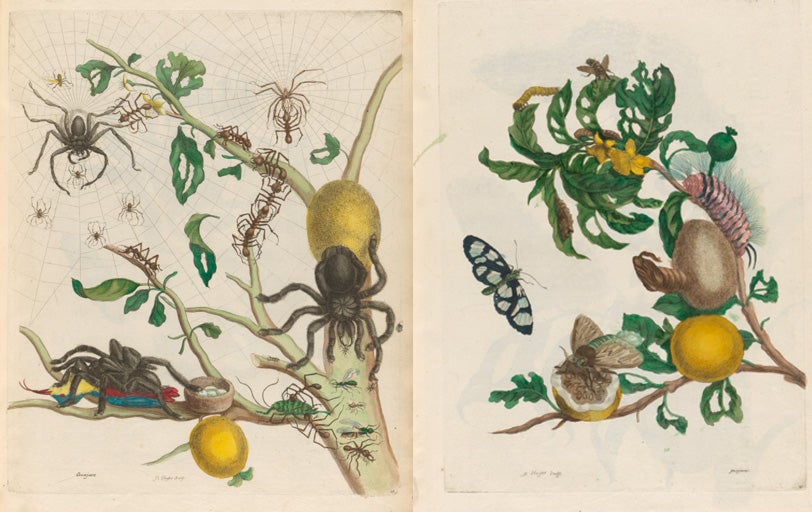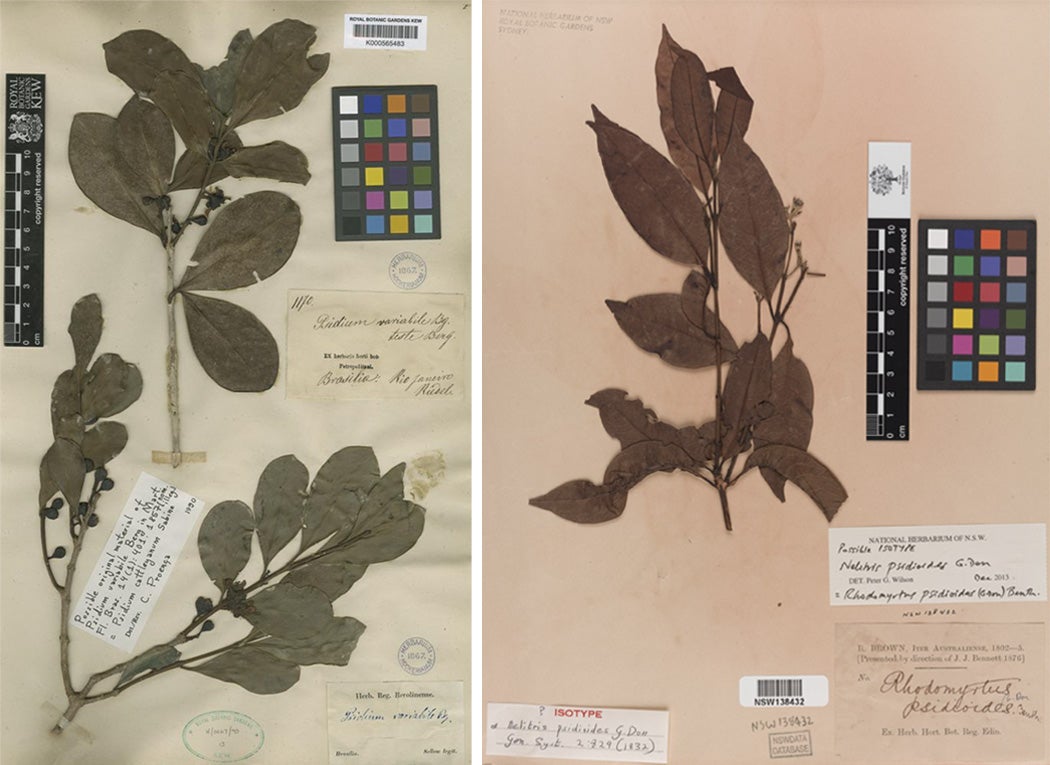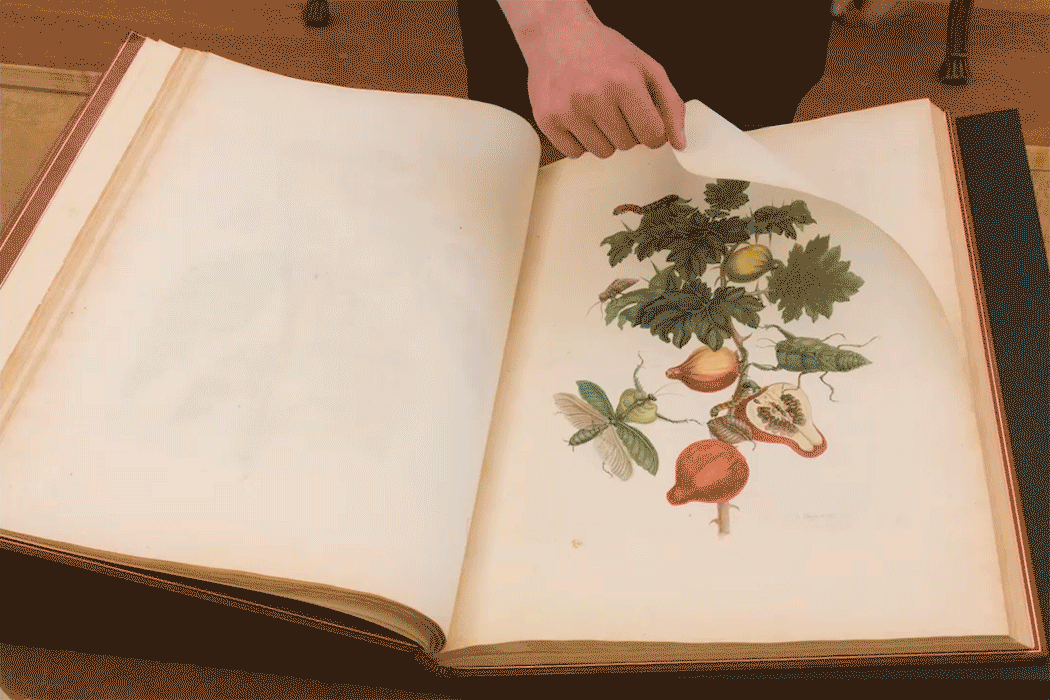Guava is the stuff of tropical drinks and beach dreams for many Westerners, a pathway to paradise. Lately the fruit has attracted attention as a new superfood, with growing evidence pointing to its medicinal benefits for diarrhea, diabetes, and other ailments. But did you know that guava is a contested plant around the globe, simultaneously at home and out of place?
In Hawai‘i, a biological battle between native plants and the Brazilian strawberry guava sparked a fight between conservationists worried about biodiversity and local growers who see the plant as part of their culinary culture. Meanwhile, thousands of miles away in Australia, scientists rush to save a beloved native guava, decimated in just ten years by the arrival of a fungus. Guava complicates a prevailing good-versus-evil narrative about native and invasive species.
How did a Brazilian plant species even reach an island chain in the vast Pacific Ocean? The origins of guava are hazy, but archaeological evidence suggests the tree was domesticated at least 5,000 years ago, likely in northern South America. The plant spread throughout South and Central America and the Caribbean islands via humans, birds, and other animals. People were eating guava in Peru by 800 BCE and in Mexico 600 years later.

Colonial movements dislodged the plant from its familiar contexts and spread it around the world. The European fascination with tropical fruits can be seen in illustrations of South American guavas digitized by the Rare Book Collection at Dumbarton Oaks, the work of groundbreaking naturalist and artist Maria Sibylla Merian, who would have seen the fruit in Suriname at the turn of the eighteenth century. In 1526, a Spaniard chronicled the first known European encounter with guava on what is now Haiti. Colonial ships introduced the tree to the Philippines and India, and soon guava took root around the world. People in these new regions developed traditional guava medicine—for hypertension in South Africa, ulcers in the Philippines, antiseptics in China—naturalizing a foreign species within local cultures in just a few centuries.
Strawberry guava (Psidium cattleianum) reached Hawai‘i by the early nineteenth century, possibly on the same ship that returned the bodies of the deceased Hawaiian king and queen from England in May 1825. It was not the first guava on the islands, where at least seven species and forms were recorded in a 1917 report. Already, the author characterized the fruit negatively, calling guavas “serious pests” that possess “all the attributes essential for aggression.”
In the ensuing years, strawberry guava grew across hundreds of thousands of acres of native forest, clearing out practically every other plant in its path. It is poised to take over half the land area of the Big Island. When a plant enters a new ecosystem where it did not evolve, it can act invasively—taking without giving. Predators and diseases from Brazil are not around to hamper strawberry guava. Instead, it attracts feral pigs and non-native fruit flies that damage the ecosystem. Rainforests help replenish the aquifers that provide most of Hawai‘i’s fresh water, but dense strawberry guava thickets leach water overall. Older islands should display more biodiversity, but non-native plants are erasing signs of these long-term evolutionary effects on the Hawaiian Islands.

A group of conservationists, scientists, and officials took action to curtail strawberry guava, not least because it was crowding out the native ‘ōhi‘a plant, a sacred tree with spiky red flowers that adorn hula dancers, and a keystone species. In a twist, they won USDA and state approval to introduce the non-native Brazilian scale insect (Tectococcus ovatus), which attacks only strawberry guava and slows its growth, after years of research.
But local farmers complained about the measures. In their eyes, strawberry guavas were the source of lucrative jams and a longstanding flavor of Hawaiian food culture. The bugs were not a savior of native plants but a perceived threat to their backyard orchards and family farms.
As strawberry guava proliferated, people adopted it into their customs and livelihoods. But as that spread threatened other local plants and key resources, the plant was recategorized as an invasive, a danger to be contained.
Across the Pacific, a very different biocultural battle has emerged. Native guava species Rhodomyrtus psidiodes seems headed for extinction after a devastating myrtle rust fungus (Austropuccinia psidii) arrived ten years ago. Originating in South America, myrtle rust has crisscrossed the world for decades, with the latest outbreak starting in Hawai‘i in 2005. In Australia, 23 percent of native guava populations have vanished, and no remaining plants are producing new fruit. Commenters wrote that “Australia needs better protection from bio-invasion” and a “native plant continues to fight back against global disease.”
Weekly Newsletter
The endangered state of native guava in Australia could not be more different from the excessive proliferation of strawberry guava in Hawai‘i—yet the context in which they are understood is the same. Nativeness is good, invasiveness is evil. It is the role of scholarship to complicate and add nuance to such binary oppositions. In recent decades, scholars have highlighted the drawbacks of words like “invasive” and “native,” pointing out their xenophobic histories, sometimes racist undertones, ecological pitfalls, and hypocrisy when faced with the greatest invaders of all: humans.
Guava is neither invasive nor native. What someone dreaming of an island vacation lumps into one fruit is actually many species, behaving differently in different places, sometimes even within the same island. By investigating such cases, the Plant Humanities Initiative illuminates just how entangled plants are in human culture.
Support JSTOR Daily! Join our new membership program on Patreon today.







